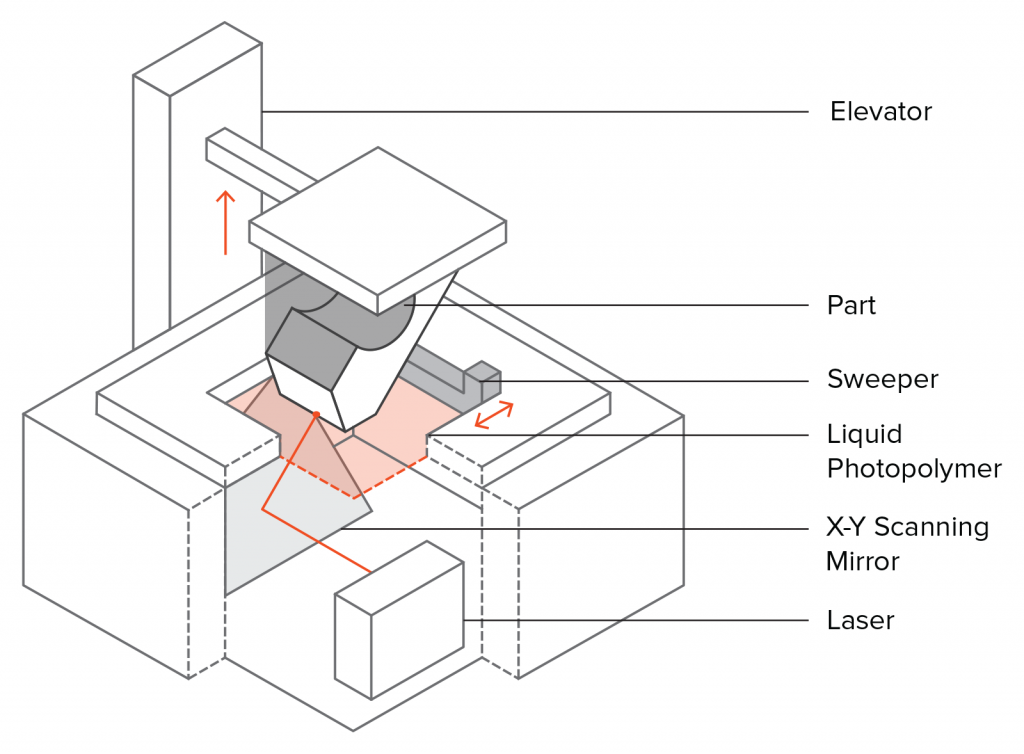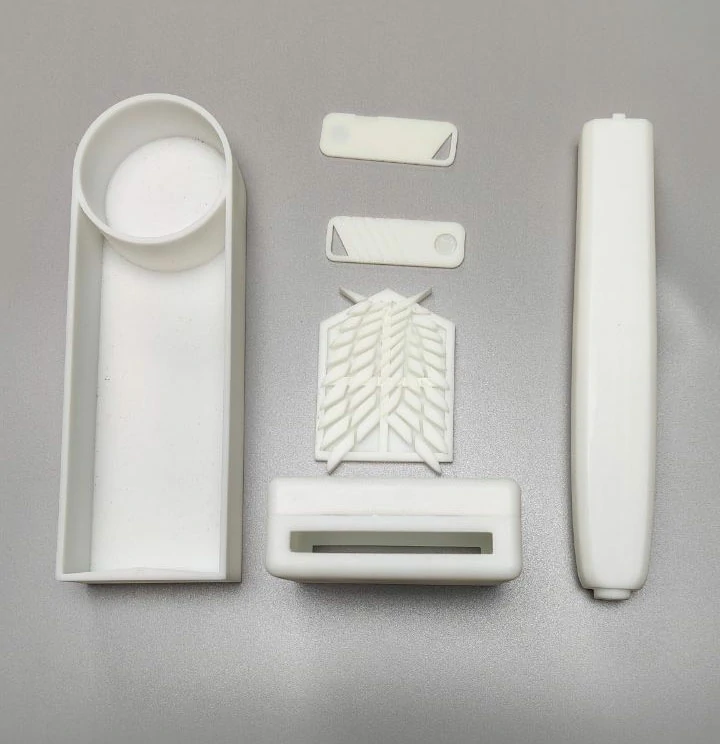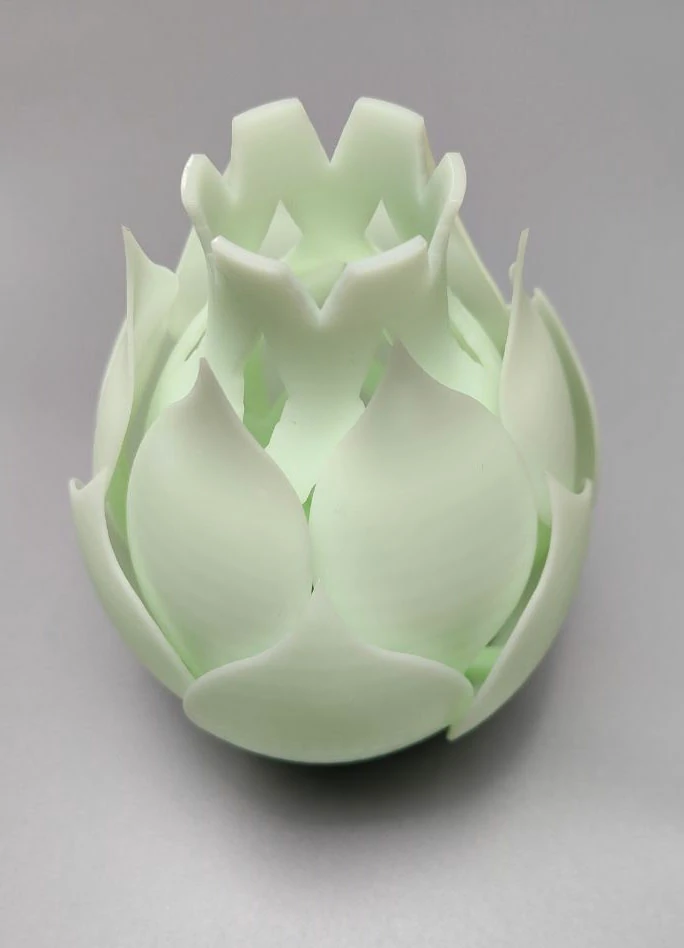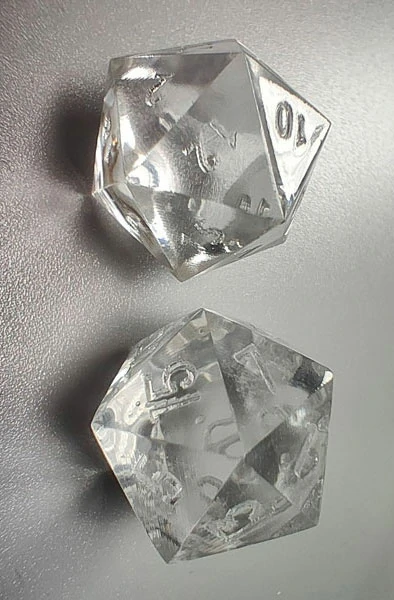Stereolithography SLA
What is SLA?
3D printing technology SLA, full name Stereolithography, also referred to as SL, is an additive manufacturing process.
It uses UV lasers to precisely cure cross-sections of photopolymers, transforming them from liquid to solid. Parts are constructed directly based on CAD data, layer by layer as prototypes, investment casting models, tools, and end-use parts.
The liquid material used for SLA printing is usually called “resin” and is a thermosetting polymer.
How does SLA work?
First, use any CAD software or 3D scan data to design your model and export it to a 3D file format (STL or OBJ). Each SLA printer includes software to specify print settings and slice the digital model into multi-layer printing. After the setup is complete, the print preparation software will send the instructions to the printer via wireless or cable connection.
Secondly, after the printing process starts, the UV laser draws a pre-programmed design or shape on the surface of the photosensitive polymer tank. The photopolymer is very sensitive to ultraviolet light, so the resin is cured photochemically and forms a single layer of the desired 3D object. After completing one layer, the build platform is lowered one layer, and the blades recoat the top of the tank with resin. Repeat this process for each layer of the design until the 3D object is complete.
Finally, the finished part must be cleaned with solvent to remove wet resin on its surface.

History of SLA
The SLA 3D printing process first appeared in the early 1970s, when Japanese researcher Dr. Hideo Kodama invented the modern layering method of stereolithography, which used UV-curing photopolymers. The term stereolithography was coined by Charles (Chuck) W. Hull, who patented the technology in 1986 and founded 3D Systems to commercialize it.
Advantages of SLA
- SLA printing is fast, and functional parts can be manufactured in one day.
- Prototypes and designs made by SLA are robust enough.
Disadvantages of SLA
- SLA printing is expensive.
- The photopolymer of SLA material is very sticky, very dirty, and cumbersome to handle.
LAVA SLA 3D Printing
SLA 3D printing is the most commonly used 3D printing technology in lava, and it is also the process most selected by customers. Because it’s cheap and fast. The material used in this process is resin, which is similar to plastic, such as standard resin, flexible resin, transparent resin and so on.
Here are some products printed with SLA:



Contact Us
If you have any questions or needs for 3D printing, please contact us and we will reply you soon.
